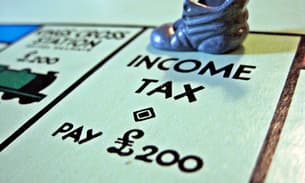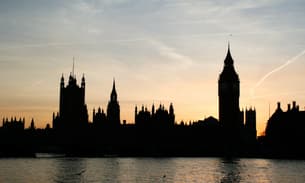
Public pay: Just how many earn £100k?
Working for the public sector used to mean trading high wages in favour of job security and a gold-plated pension – but not any more.
New figures reveal the average public sector worker is now paid just £1 a week less than his private sector counterparts were at the peak of the bonus boom in 2008.
Yet while private sector pay has fallen sharply since then, public pay continued to climb, leaving the typical public sector employee £11 a week – £572 a year- better off than his commercial counterpart.
The stats say it all. Public sector pay has spiraled out of control.
The government’s wage bill has jumped 29% in five years to hit £157.7bn. Tackling this will be a priority for any major political party looking to slash the UK’s deficit – and it’s no surprise all three parties have promised to start with those earning the most.
But new not-for-profit investigative production house, The Bureau of Investigative Journalism can reveal the first obstacle for these politicians: no-one knows how many public workers earn more than £100,000. And no-one even knows how many public sector organisations exist.
Without this information, efforts to tackle the problem could never work – which is why the Bureau has embarked on an ambitious months-long project to find out.
Pile on the pay
The bill has bulged in part thanks to the increasing number of people working for the government, which at the last count stood at just over six million. But much of the blame must be put down to generous pay increases.
Even in these hard pressed times average public sector salaries have increased by 3.9 per cent compared to 0.9 per cent in the corporate world.
As David Frost, Director General of the British Chamber of Commerce, said: ‘Right across the spectrum of pay and conditions the public sector is now outstripping the private sector.’
Government fat cats
Nowhere is this more pronounced than at the top.
It is now not uncommon to find public sector bosses earning substantially more than the prime minister, with lucrative five figure bonuses on top.
Who are these public sector fat cats? At The Bureau of Investigative Journalism we have sent out more than 2,500 Freedom of Information requests and are in the process of trawling through thousands of Annual Reports in an attempt to collate the most comprehensive list of Britain’s highest paid public servants ever produced.
Snapshots
The media have highlighted areas of high pay in government, but they have only provided snapshots.
One recent newspaper headline threw scorn on the 6.9 per cent pay increase enjoyed by chief executives in the NHS, a statistic that was picked up by David Cameron in the first TV debate.
It came from a comprehensive study of NHS bosses (PDF), but the research stopped there.
A wider study would have revealed that there are dozens of highly paid staff in each of our hospitals – not just the chief executives.
Salaries for top consultants, for example, have risen by a staggering 39 per cent since 2003, catapulting our senior clinicians into the top two per cent of all Britain’s earners.
Another report, by the Taxpayers’ Alliance, attempts to provide a list of the highest government workers. But there are notable omissions. Judges, hospital consultants, many quango bosses, super-heads, top staff at our universities are just a few of our higher paid public servants that make no appearance.
Compiling the data
Perhaps one of the problems, apart from the sheer scale of the task, is that there is no central government list of every public body from which to work.
We spoke to seven organisations to get a list. Nobody could supply it.
The Cabinet Office pointed us to its Public Bodies list. This details 750 None Department Public Bodies, or quangos. But Matthew Flinders, an expert on governance, says there are at least 1,500.
Instead we had to go to each government department, often asking several times before we had every organisation falling under their control.
Making cuts
In the run up to the election all parties may be shying away from the mention of job and pay cuts. But there is widespread consensus that we cannot tackle the huge gap in our public finances without trimming our public sector remuneration bill.
As far back as 2006 Gordon Brown signaled a desire to get a grip on pay increases at the top of the public sector.
David Cameron has pledged to peg top pay in public bodies to 20 times that of the lowest paid employee in that organisation. This in itself is not going to cause too many concerns among our public sector high rankers. Even based on the minimum wage this would give them an annual salary cap of £246,688.
Naming and shaming
In order to get to grips with the problem the government has issued new guidelines stating that every public sector worker earning more than £150,000 should be named in all financial accounts from next year. Yet there is still reluctance in many public bodies to provide details of the highest paid.
It is time for greater transparency.
Not because we want to encourage an onslaught of public sector bashing but because there needs to be the same checks and balances within our public bodies as there are in commercial enterprises.
Even within the public sector there is a growing recognition that things have gone too far.
Sir Norman Bettison, the Chief Constable of West Yorkshire recently waived his performance-related bonus stating that his £213,000 salary was already too large.
Throwing the spotlight
Over the next few weeks we will examine the three major parties’ proposals on public pay, and how far they go to tackle the thousands of people growing rich while remaining under the public’s radar.
We will also reveal the pervasive culture of secrecy around salaries: the organisations hiding the names and wages of their staff – and we’ll show how so many of the public sector rich have kept themselves hidden from scrutiny.
It’s a simple issue: we pay public sector wages. Surely we deserve to know how much we’re forking out?




